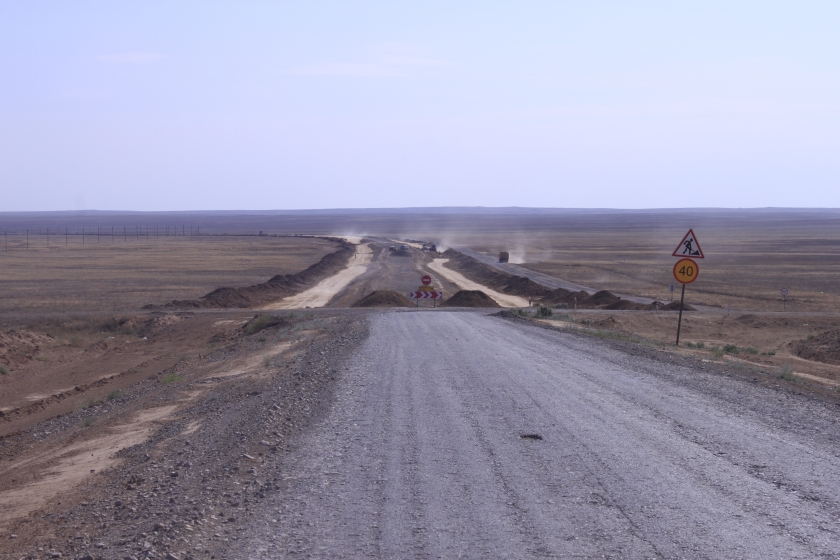
China’s Belt and Road Initiative (BRI) comprises more than two-thirds of the global population and one-third of the global economy, involving at least 87 other countries. While most BRI-related discussions are about its costs and benefits to the different regions and countries’ economies, less attention has been paid to the environmental impact of such extensive infrastructure development.
The BRI demands a large-scale expansion of land transportation infrastructure, coupled with the development of new ports in the Pacific and Indian Oceans. This infrastructure is expected to facilitate regional and intercontinental trade flows, as well increase energy supply, namely oil and gas. However, the economic development aspirations of the BRI may clash with environmental sustainability goals, particularly in sensitive biodiversity areas such as Southeast Asia and tropical Africa. The negative impact of roads and other infrastructure on biodiversity are well known and include increased wildlife mortality, restrictions of animal movement, pollution (chemical, noise, light), and the spread of invasive species. In tropical forests, new openings for roads and other linear infrastructures will likely increase illegal logging, poaching, and fires by facilitating access to previously remote regions. Overall, the expansion of transportation networks will increase habitat loss and fragmentation, the overexploitation of resources and the degradation of surrounding landscapes. Such impact, which is already being felt in some areas of sub-Saharan Africa and the Amazon, will degrade ecosystems and possibly push some beyond their tipping point, when even small negative changes can lead to abrupt changes in ecosystem quality and functionality.
A remarkable example of development taking a significant toll on biodiversity is the case of Indonesia’s Tapanuli orangutan. This is one of the most imperiled species in the world, with fewer than 800 animals surviving in a tiny tract of forest in Northern Sumatra. The Chinese-funded Batang Toru hydropower project is a major threat to the Tapanuli orangutan, as it will flood key habitat areas and demand the construction of new roads, powerlines, and other infrastructure in its habitat. If it proceeds, this project will have huge ecological costs, despite fiscal revenue, and potentially lead to the outright extinction of this species.
The holistic success of the BRI therefore depends largely on whether China lives up to its aspirations for sustainable development, as set out in the BRI’s Ecological and Environmental Cooperation Plan. This states that cooperation on environmental protection is a fundamental requirement for the BRI, and that such cooperation is vital for a green transformation of China’s national and regional economy. It is crucial that the BRI-related projects happening outside China comply with the environmental standards that China aspires to at home. Strategic Environmental and Social Assessments (SESA) should be conducted along each major economic corridor of the BRI to provide a systematic evaluation of the environmental consequences of proposed policies and programs. Conducting SESAs ensures that effects of these plans are appropriately addressed at the earlier stages of decision making and reliable environmental impact assessments of specific projects can prevent irreparable ecological damage. This will help ensure that objectives for local and regional development are met while avoiding the most environmentally damaging choices. SESAs must be performed by independent institutions to guarantee their international credibility and acceptance. For example, an alternative route for the proposed Cross River Superhighway in Nigeria was accepted by the state government once a rigorous environmental assessment was presented. Although construction of this super-highway is yet to start, its new route is expected to cause less environmental degradation while providing greater local economic benefit by improving access for many existing villages and agricultural lands.
It should be noted that infrastructure planning that takes into account environmental sustainability is unlikely to increase the total cost of such infrastructure. In fact, such adjustments can generate substantial conservation and social benefits, such as biodiversity protection. Moreover, the cost of building and maintaining infrastructure in environmentally sensitive areas is often high. In particular, building roads on floodplains or steep terrain may cost billions of dollars in lost revenue from impacts on downstream fisheries, agriculture, recreation, aesthetics, and ecological restoration. For example, a study in Current Biology showed that road expansion in the Lower Mekong Basin is expected to negatively affect fisheries worth an estimated $2 billion per year. Most importantly, environmentally-friendly planning actually decreases costs to human well-being through the preservation of key ecosystem services such as clean air and water, and carbon storage.
Of course, this path has its challenges, primarily convincing foreign companies to comply with rigorous and pro-active planning. However, procedures similar to SESAs have been regularly applied in China since the 1990s, including the “21 Century Agenda of China: White Book of China's Population, Environment and Development” (1994), and more recently the Environmental Impact Assessment law (2003). Currently, SESAs are a legal requirement for major economic development activities, such as the Hubei Road Network.
In addition, financial institutions involved in the BRI have well defined environmental and social policies. One example is the Asian Infrastructure Investment Bank (AIIB), which plays a key role in funding BRI projects. The AIIB Environmental and Social Framework (ESF) clearly states that: “The objective of biodiversity conservation and sustainable management of natural resources should be balanced with a commitment to sustainable use of the multiple economic, social and cultural values of biodiversity and natural resources in an optimized manner.” This framework provides a roadmap for the creation of further environmental protection structures as the BRI continues to expand. Hence, BRI stakeholders should be required to follow such guidelines, linking each project's funding to environmental sustainability compliance. In this way, China’s Belt and Road Initiative could become a unique opportunity to raise the bar, setting higher standards for best practices that link the design and implementation of infrastructure to environmental protection now and in the future.
